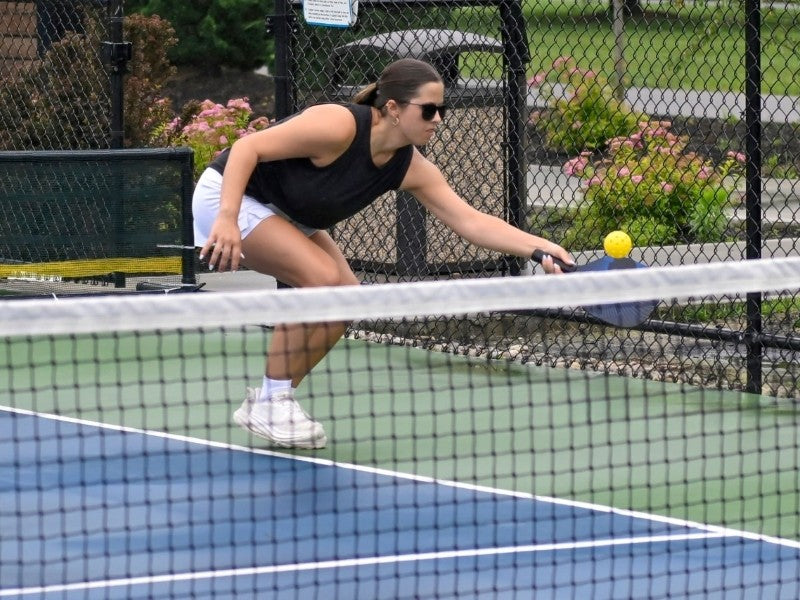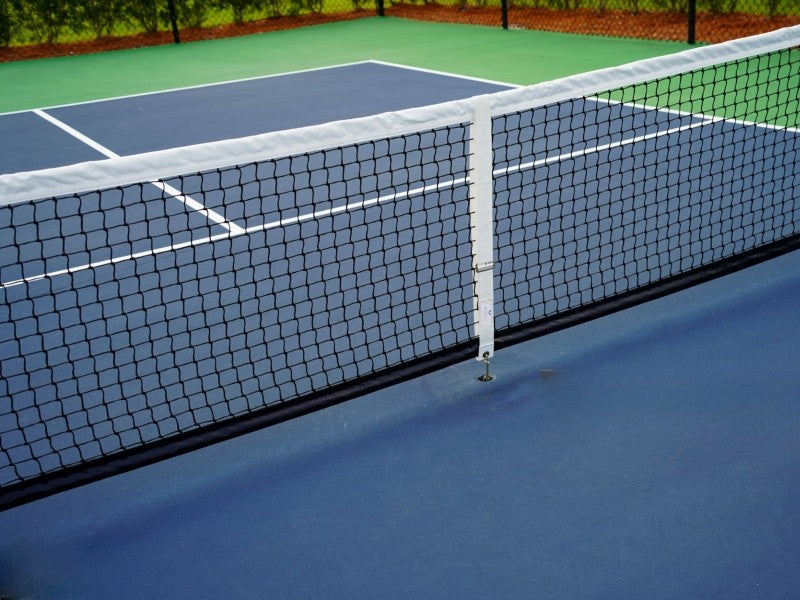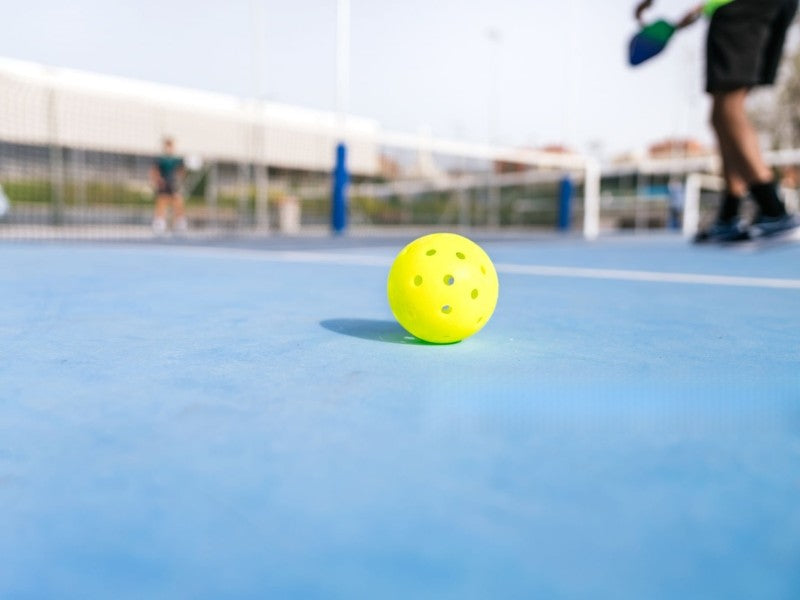Quick Answer: Will Pickleball Be in the Olympics?
As of 2025, pickleball is not yet an Olympic sport, and it has not been selected for inclusion in the Los Angeles 2028 Olympic Games.
However, the conversation around Olympic recognition is growing louder every year — thanks to pickleball’s explosive popularity, ongoing international organization efforts, and formal dialogue with Olympic-related bodies.
While the International Olympic Committee (IOC) has not officially recognized any pickleball governing body yet, several organizations — most notably the Global Pickleball Federation (GPF) and the International Federation of Pickleball (IFP) — are actively working toward meeting IOC criteria.
This process involves establishing global governance unity, anti-doping compliance, and representation across multiple continents.
Realistically, pickleball’s earliest Olympic opportunity could be the 2032 Brisbane Games, assuming the sport achieves full international federation recognition by 2028–2030.
Until then, pickleball enthusiasts can look forward to growth through continental games, world championships, and potential youth or demonstration events that help build the case for future Olympic inclusion.

Why People Are Asking: Pickleball’s Explosive Growth
Over the past decade, pickleball has transformed from a backyard pastime into one of the fastest-growing sports on the planet.
In the United States alone, participation jumped from just over 3 million players in 2019 to more than 13 million by 2024, according to the Sports & Fitness Industry Association (SFIA).
Courts are springing up in public parks, private clubs, and even repurposed retail spaces — a clear sign of how rapidly the sport has penetrated mainstream recreational life.
Globally, the trend mirrors the U.S. explosion.
Countries like Canada, the U.K., India, Australia, Japan, Germany, and the UAE have all launched national federations and competitive circuits.
The international tournament calendar now includes dozens of professional and amateur events, some of which offer prize pools comparable to those of established racquet sports.
Mainstream outlets like ESPN, NBC, and The New York Times have regularly featured pickleball since 2021, while celebrities such as LeBron James, Kim Clijsters, and Tom Brady have invested in professional pickleball leagues.
Such visibility fuels public curiosity: if pickleball is now a global professional sport with millions of players, why isn’t it already in the Olympics?
The Path to Olympic Inclusion: What Needs to Happen
For pickleball to secure a place in the Olympic Games, it must go through a structured, multi-step process — one that every new sport has to complete. Understanding this pathway helps fans and stakeholders see where pickleball currently stands and what milestones are next.
Step 1: Achieve IOC Recognition
The first milestone is obtaining formal recognition from the International Olympic Committee (IOC).
This step depends on:
· Global reach: Typically, the sport must have national federations in at least 40–75 countries, spread across three to four continents.
· Governance unity: Only one global governing body can represent the sport.
· Compliance: The federation must adopt the World Anti-Doping Code, ensure fair play, and demonstrate proper athlete welfare standards.
· Transparency and governance: The IOC requires detailed documentation of structure, finances, and democratic representation.
Pickleball is currently progressing through this stage, though its fragmented governance has slowed progress.
Once unification under the Global Pickleball Federation (GPF) stabilizes, the sport will likely be in a position to apply for IOC recognition officially — a process that can take 2–3 years to review and approve.
Step 2: Demonstrate Global Popularity
Recognition is only part of the equation. To make it onto the Olympic program, pickleball must show that it’s played widely and competitively worldwide.
· As of 2025, there are over 70 national pickleball associations and growing.
· Participation data indicates that millions of players now play regularly in over 100 countries.
· Global tournaments and youth development programs are emerging across Europe, Asia, and Latin America.
The IOC favors sports that are:
· Gender balanced (equal participation opportunities).
· Accessible and inclusive (minimal barriers to entry).
· Media-friendly (spectator appeal and broadcast potential).
Pickleball’s compact courts, fast rallies, and universal appeal across age groups make it a strong contender on all these fronts.
Step 3: Appear in Multi-Sport Events
Before an Olympic debut, sports often appear in regional or continental games first.
For instance:
· Skateboarding and surfing appeared in World Urban Games and World Beach Games before joining the Olympics.
· Baseball and softball were reintroduced via the Pan American Games.
Pickleball’s federations are now negotiating inclusion in Asian Games, Pan American Games, and World Masters Games — key stepping stones that demonstrate global legitimacy.
Step 4: IOC Program Commission Review
Once recognized and widely practiced, the sport must be reviewed by the IOC Program Commission, which evaluates:
· Audience interest and youth appeal.
· Cost and infrastructure needs.
· Compatibility with Olympic values.
· Global TV and digital media potential.
The commission then recommends whether to include the sport as a demonstration, optional, or official discipline in future Games.
Step 5: Host City Approval
Finally, even if the IOC approves the sport in principle, it’s up to host cities to decide which additional sports to feature.
Los Angeles 2028, for example, added lacrosse, squash, and flag football — but not pickleball.
However, the Brisbane 2032 Olympics could be an ideal opportunity, as Australia already has one of the fastest-growing pickleball communities in the world.
Timeline: When Could Pickleball Join the Olympics?
While there’s no confirmed date, analysts and federation insiders see several possible scenarios for pickleball’s Olympic debut.
Scenario 1: The Fast-Track (2028–2032)
If the Global Pickleball Federation finalizes unification and achieves IOC recognition by 2027 or earlier, the sport could appear as a demonstration event at the Brisbane 2032 Games.
Demonstration events showcase new sports without awarding official medals but serve as trials for future inclusion.
This path mirrors what happened with skateboarding and sport climbing, both of which started as youth and exhibition sports before becoming full medal events.
Requirements for this scenario:
· GPF must achieve IOC recognition by 2027.
· Pickleball must expand to at least 80 active national federations.
· Anti-doping and international rankings must be standardized.
· A strong case for gender balance and youth appeal must be presented.
If successful, pickleball could see its first Olympic exhibition in 2032, with medal inclusion by 2036.
Scenario 2: The Moderate Path (2036–2040)
A more likely trajectory places pickleball’s inclusion between 2036 and 2040, following a full IOC recognition period and participation in multiple continental events.
This approach allows more time for:
· Institutional maturity.
· Stable global competitions and TV partnerships.
· Broader adoption in developing countries.
Under this scenario, pickleball’s journey mirrors that of karate, surfing, and skateboarding, which each took over a decade from IOC recognition to official inclusion.
Scenario 3: Long-Term (Beyond 2040)
If unification or compliance issues persist, Olympic inclusion could stretch beyond 2040.
This would not diminish pickleball’s growth but would shift its focus to independent world championships, professional tours, and inclusion in youth and senior games until the IOC deems it ready.

Why Pickleball Fits the Olympic Spirit
Beyond logistics and governance, pickleball embodies many of the core values the Olympics promote: inclusivity, accessibility, and community.
Accessibility and Inclusivity
Unlike many high-cost sports, pickleball requires minimal equipment — a paddle, a ball, and a small court.
This low barrier to entry allows developing nations and grassroots communities to participate easily.
The sport also attracts a wide demographic, from children to seniors, aligning with the IOC’s emphasis on lifelong athletic participation.
Spectator Appeal
Pickleball’s dynamic gameplay — quick volleys, short points, and close player interactions — make it highly engaging for spectators.
The rise of televised professional leagues like Major League Pickleball (MLP) and the PPA Tour demonstrates strong broadcast potential, a key IOC consideration.
Gender Balance
The sport has naturally evolved with near-equal male and female participation.
Professional tours already feature mixed doubles, offering a gender-integrated format that perfectly aligns with modern Olympic values.
Youth Development and Education
Pickleball is increasingly introduced in schools and universities worldwide.
In the U.S., hundreds of public education programs now include pickleball in physical education, helping nurture the next generation of players — a major plus for IOC consideration.
What Olympic Inclusion Would Mean for the Sport
When pickleball eventually joins the Olympic family, the impact will be transformative:
1. Greater Funding and Infrastructure
National Olympic Committees (NOCs) will begin funding training centers, athlete scholarships, and grassroots programs — especially in developing countries.
2. Professionalization of the Sport
Olympic legitimacy attracts new sponsors, broadcasting deals, and standardized global rankings.
This could elevate pickleball’s top players to global stardom, similar to tennis or badminton icons.
3. Youth Engagement
An Olympic debut would ignite interest among young athletes, ensuring long-term sustainability and international competitiveness.
4. Enhanced Global Cooperation
A unified governing body would streamline tournaments, rules, and anti-doping systems — making pickleball’s ecosystem more professional and credible.
Key Takeaways and FAQs
Is Pickleball in the Olympics?
No — not yet. Pickleball is currently not recognized by the IOC and is not part of the 2028 Olympic program.
When Could It Be Added?
The earliest possible inclusion is as a demonstration sport in 2032, with potential medal competition by 2036 if governance and recognition milestones are met.
Who Is Leading the Effort?
The Global Pickleball Federation (GPF), alongside national organizations like USA Pickleball, is coordinating international alignment and IOC compliance.
What Can Fans Do?
Support your local federation, join international tournaments, and promote the sport’s global image — visibility matters to the IOC.
Conclusion
Pickleball’s Olympic dream is still on the horizon, but it’s becoming increasingly realistic.
The sport’s massive global growth, inclusive spirit, and media appeal position it as one of the strongest future candidates for Olympic inclusion.
While it won’t be in Los Angeles 2028, the momentum toward Brisbane 2032 and beyond is undeniable.
As unification progresses and international standards mature, one thing is clear:
Pickleball’s Olympic journey has already begun — it’s only a matter of time before the world’s fastest-growing sport takes its place on the biggest athletic stage of all.









Leave a comment
This site is protected by hCaptcha and the hCaptcha Privacy Policy and Terms of Service apply.